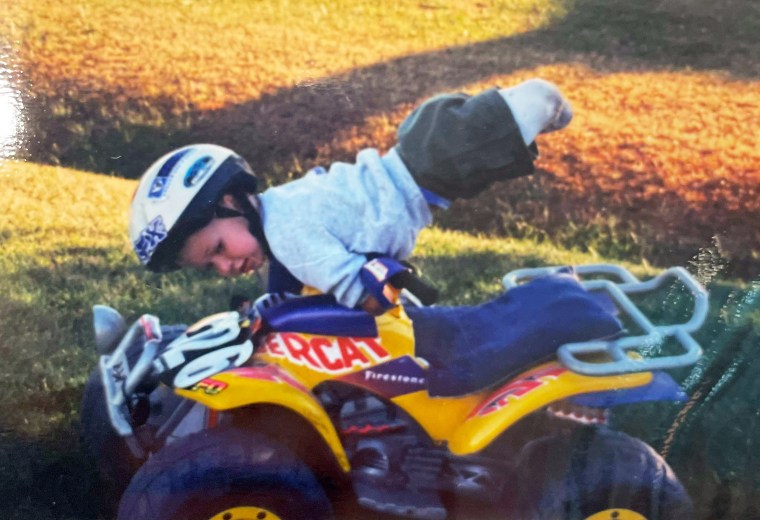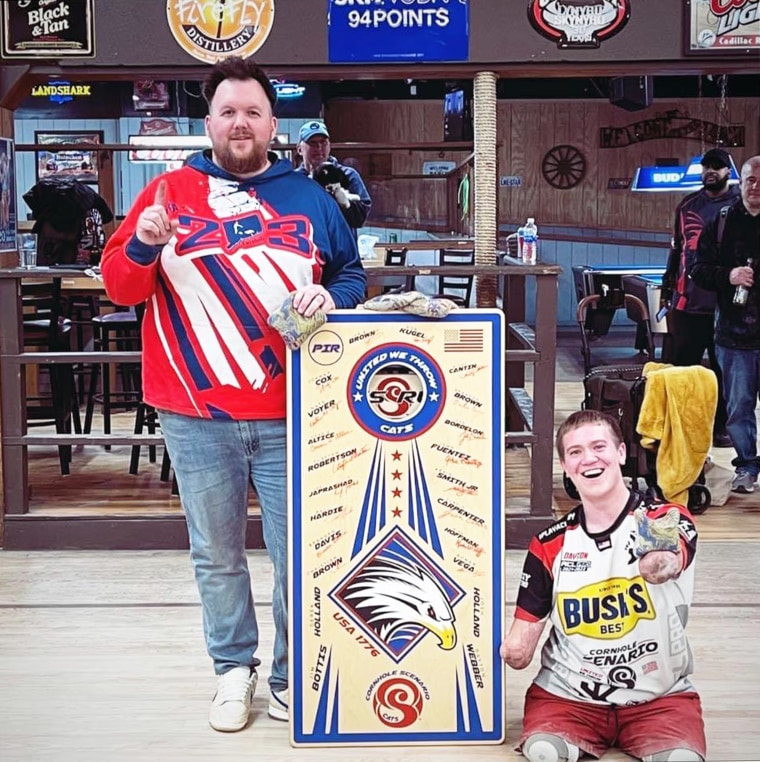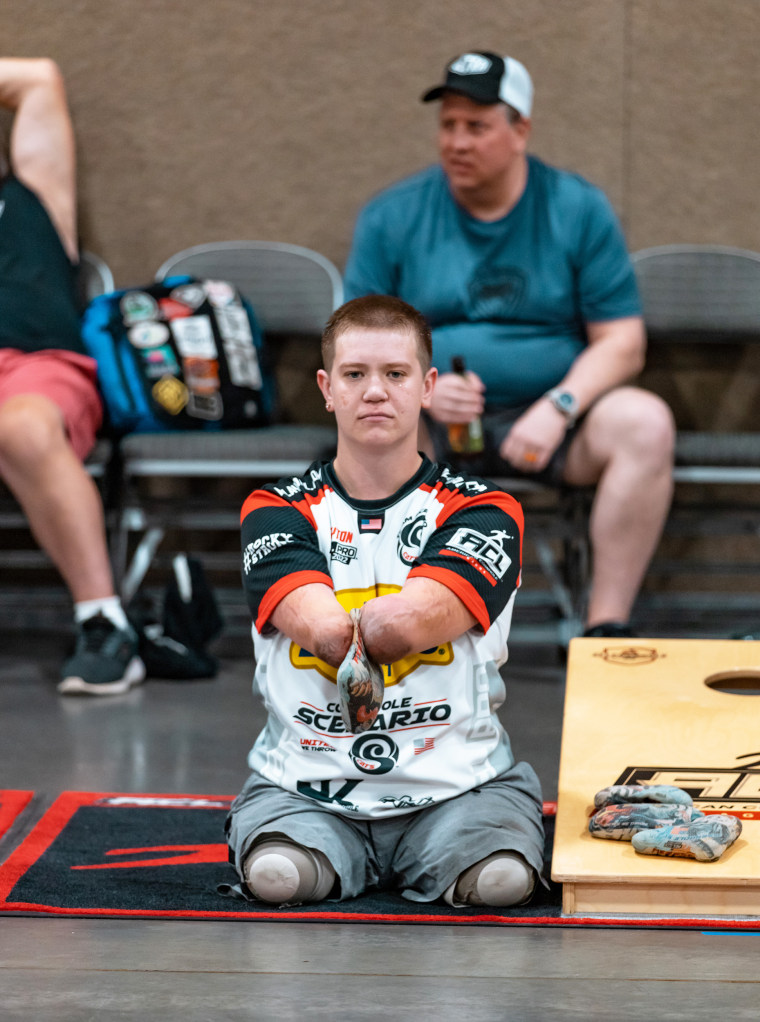Dayton Webber, 25, is a professional cornhole player in the American Cornhole League. Since he was 10 months old, he has been a quadruple amputee. In an essay for TODAY, he shares what it took to go from an amateur to professional competitor.
The first time I won a cornhole championship, I knew I could make it as a pro. It was the state finals and my teammate and I were down 20 to 4 in the last round of cornhole. It seemed like we might lose. But we fought back and ended up winning 21 to 20, clinching the title. It was one of the biggest accomplishments of my professional cornhole career — and it felt amazing to go from underdog to winner. In many ways, surprising people has always been part of my life. I went from overcoming a serious blood infection and undergoing a quadruple amputation as a baby to becoming a professional athlete as an adult.For the past eight years, I have been playing cornhole — first as an amateur, and now as a professional with the American Cornhole League — the professional cornhole league in the United States. I started off playing in the backyard with friends and then began playing weekly at the local American Legion. I loved it so much, I never missed a Friday.

While many people know the game cornhole from tailgates and picnics, it has become an elite level sport. I’ve been a professional for the past two years. While being a professional athlete takes up much of my time, I also create content for my YouTube channel and hope to begin taking on motivational speaking engagements. To train for cornhole, I play three or four hours a day, much like any other competitor. But I stand out because I do not wear my prosthetic legs during competition. Generally, I don’t use prosthetic arms because they don't allow me to feel things, such as a cornhole beanbag, with enough sensitivity.
People often underestimate me when they see me — no matter the context. I have been a quadruple amputee since contracting a serious streptococcus pneumonia blood infection when I was 10 months old. As doctors rushed to save my life, they realized they needed to amputate my arms and legs to slow the infection. They told my parents there was only a 3% chance that I’d survive. For four months in the hospital, I fought and eventually overcame the infection. I learned how to do things, such as writing, on my own. I even taught myself how to drive by racing go-karts.

Teaching myself how to do various tasks — such as writing, picking things off the floor and even driving — helps me with cornhole, too. I’ve had to adapt my style to fit what works with my body. Most players throw the beanbag flat. Because of the angle I’m throwing from, this technique doesn’t really work for me. I grab the bag by the corners because it gives me more leverage than I would have if I threw it flat. I can feel when the bag is in a certain spot where I know I can release it and it will sail where I want it to. If I were wearing prosthetic hands, I would struggle to have this same control.
When I play cornhole I rely on a hoverboard to navigate the arena, shunning the prosthetics outside of competition, too. I do sometimes use a wheelchair, such as when I go hunting or fishing. This chair has tracks like a tank so I can maneuver it on uneven terrain. I can take it in the snow, through creeks and up hills.

Being a professional cornhole player has taught me an important lesson that I use in my everyday life: Forget what has already happened. I take each day as it comes and do not dwell on how I performed the day before — there’s nothing I can do to change the past. That way I’m not bogged down in the what-ifs. I just focus on making the next hole. This mentality helps me bounce back in my everyday life, too. If I have a tough day, I start the next day fresh.
I want to encourage others to take chances and pursue their dreams. I’ve overcome difficulties and I think others can, too. For much of my life, I’ve grappled with people underestimating me because of how I look. People assume that I can't operate heavy equipment, for example, but I can. That’s why I hope people give disabled people a chance. We will definitely surprise you. If we say we can do it, we can do it. We’ve probably done it before.
As told to Meghan Holohan